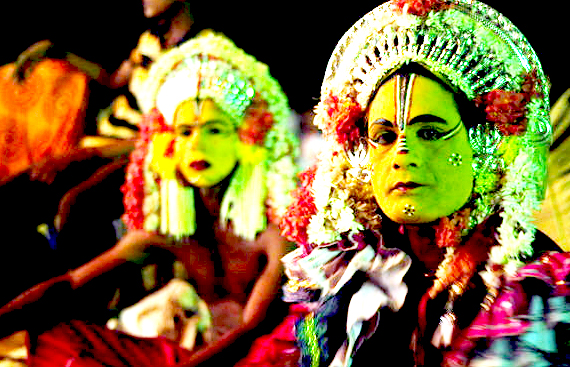What is Bhoota Kola Tradition, Showcased in Vikrant Rona Movie?

Karnataka remains incomplete without mentioning its rich tradition of Bhoota Kola worshipping spirits generally referred to as Bhootas. This tradition is significantly shown in the movie Vikrant Rona. Vikrant Rona is a Pan India action-adventure thriller film written and directed by Anup Bhandari. The star cast consists of Sudeep as the titular personality alongside Nirup Bhandari, Neetha Ashok, and Jacqueline Fernandez. The story, cast performances, cinematography, production design, background score, VFX/CGI, and action sequences were highly complimented. The movie becomes one of the highest-grossing Kannada films. The film got released worldwide on 28 July 2022.
From day one, ‘Vikrant Rona’ has received a great response from the audience and has taken over the internet. The film, released in multiple languages across the country, is creating examples of its success all around the corners. From a business perspective, the film earned 100 Cr in just four days, making it one of the biggest openings of Sudeep’s career.
The point here is states other than Karnataka are not so familiar with the tradition or a regional culture named Bhoota kola shown in the movie. That is why i am here to talk about Bhoota kola practices performed in Dakshina Kannada in Karnataka and some districts of Kerala.
What is Bhoota Kola?
![]()
Karnataka is richly known for its culture and tradition. The state's various folk festivals and practices show the rich and varied legacy. While Kerala got Kathakali and Tamil Nadu has Bharatanatyam, Karnataka also has myriad dance forms such as Dollu Kunitha, Bolak-aat, Somana Kunitha, etc., among other dance forms.
Bootha Kola is one of Karnataka's most famous folk dances, which is evident in the state's coastal regions. It is exciting and has some fascinating aspects that would make you want to witness this mysterious dance. Bhoota Kola is an animist form of spirit worship from the coastal districts of Tulu Nadu and some parts of Malenadu of Karnataka and Kasargod in Northern Kerala, India. Bootha Kola is closely related to Theyyam from neighboring Malayalam-speaking populations. The dance is highly stylized and held in praise of the local deities worshiped by the Tulu-speaking population.
Although the origin of the Bhoota Kola is unknown; yet, Bhoota Kola appears to be an inevitable part of the socio-cultural life of Mangalore. With the immigration of the early Tulu tribes who introduced the initial cults of Bermer and Panjurli. Moreover, the 'bhutas' or the spirits glorified during the festival are considered the village's guardians. They protect the villagers as well as their livestock from the evil forces.
The spirits worshiped by villagers are considered to be the attendants of Lord Shiva. It is meaningful in this context that the ‘Kola’ is a kind of Bhoota worship with devotion and inspiration.
How is Bhoota Kola performed?
![]()
One of the most fascinating and exciting visions of this dance form is the aspect of possession and spirits. The spirits are said to partially keep the dancer for a while, thus giving the dancer the energy to act as per the spirit's will and channel the spirit or deity as a medium. The entire village usually assembles for the Bhoot Kola, and thus it resembles a fair with numerous routes for entertainment and bonding.
Usually, villagers use this gathering and the spirit to resolve conflicts and issues ranging from minor theft to family rivalries and matters regarding honor. The spirit’s word is viewed as holy law and is followed by all.
The paddanas are used to call the deity, and the worship is done in large numbers. The Bhoota Kola is also utilized to ask the spirit for advice and blessings to improve land fertility and ward off disease or bad luck. The Bhoota Kola occurs annually and isn’t done as frequently as temple worship. In fact, it is not fair as such but a ritual, sometimes restricted to a single house and a village by large.
The dancers have numerous eye-catching garments and masks. Chariots, masks, and other culturally meaningful properties are used that make the entire performance a treat to watch. The Yakshagana art form of Karnataka also influences the Bhoota Kola. The channeling of spirits has made the art form stand out amongst others.
Conclusion
We all follow different traditions to worship God. We do it because worship is a statement and God is in the midst of all happening in our world today, a powerful weapon against any lie that says God is not in control. Worshiping together instructs us to submit and surrender all our cares to God, whether could be fears, dreams, hopes, etc.
These traditions show why Gods desire our worship and why they are the only ones worthy of it. We worship God because we realize that no other being, thing, pursuit, or pleasure is decent of the place since they inhabit the throne of our lives. Our worship reveals that the universe's Gods have captured our attention and won our loyalty.

